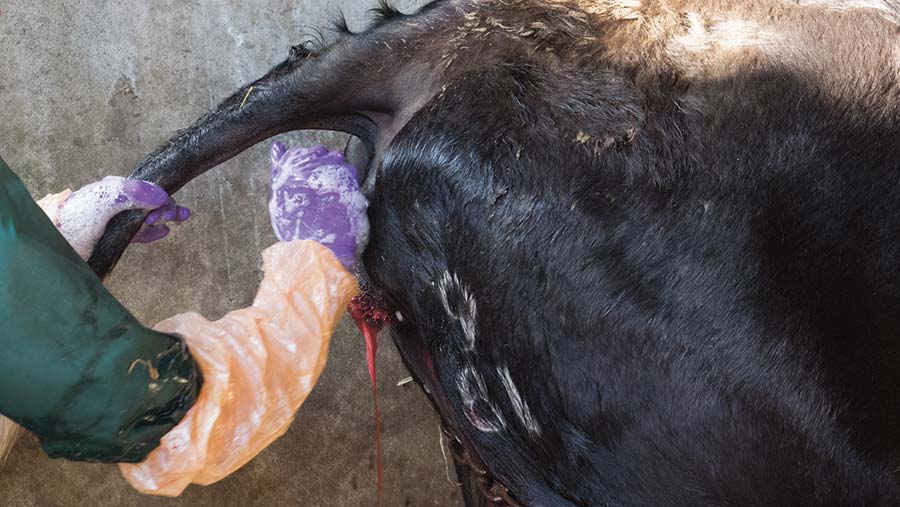Fertility Focus: How to detect and stop dirty cows

Post calving we expect our cows to go through a lot. The cow is expected to expel foetal membranes, enter the milking herd, eliminate any uterine infection and resume normal ovarian cyclicity in preparation for the next pregnancy.
Many scientific studies have demonstrated that dirty cows have a lower conception rate, longer calving interval, higher culling rates and lower lactational yield.
See also: Tips for improving cow immunity for transition success
It’s important we clarify what we mean by a dirty cow – the two disease conditions we can talk about are metritis and endometritis.
Metritis involves infection of all three layers of the uterus, is typically in the first 21 days post calving and may involve a systemically sick cow.
Endometritis is only an infection of the inner lining of the uterus. It is typically diagnosed after 21 days after calving and not normally associated with the cow being systemically ill.
Metritis
- More than 21 days
- All three layers of uterus
- Can lead to systemically sick cow
- Temperature
Endometritis
- Less than 21 days
- Just uterus lining affected
- Cow not usually systemically sick or showing temperature
Early diagnosis and treatment is essential for both conditions to lessen the knock-on effects.
Early diagnosis is particularly important with metritis, where later stage disease can lead to a fall in dry matter intake, milk yield and trigger secondary diseases such as ketosis and displaced abomasums.
The difficulty with diagnosis can be that the majority of cows will have some bacterial contamination post calving, which may or may not cause metritis and all will have some lochial discharge.
Diagnosing metritis
Strategic monitoring of fresh-calving cows is the best way of detecting metritis.
Fresh cow monitoring programmes tend to consist of both discharge monitoring with either a gloved hand or metricheck device, which scoops discharge from the anterior vagina, and temperature checking.
This check, carried out between days three and seven post calving, is likely to highlight any cows with metritis and allow early intervention with appropriate treatment typically consisting of antibiotics and anti-inflammatories.
Diagnosing endometritis
Endometritis detection starts from 21-days post calving. It can be carried out by on-farm staff or as part of a regular vet fertility visit.
A vaginal check with a gloved hand or metricheck device allows the discharge to be identified and scored.
Discharge can be scored on a zero-to-three scale depending on the percentage and volume of purulent (infected) material present.
Prevention
As with most post-calving disease, uterine health is going to be related to the success of the cow’s dry period, transition and early post-calving period.
Metritis risk factors
- Milk fever
- Retained fetal membranes
- Assisted calving
- Twins
- Stillbirth
- Excessive body condition score
- Impaired immune function
Cows entering the transition period with a good body condition score that do not gain or lose condition and are fed a diet to control calcium balance around the point of calving, are less likely to develop metritis.
Monitoring body condition in the dry/transition period will help predict any issues that may arise.
Body condition scoring at the point of dry off, entering transition and at calving will show any significant changes, but more sensitive sampling can be carried out by looking at blood metabolites (such as non-esterified fatty acids and beta-hydroxybutyric acids) pre and post calving.
Furthermore, calcium balance can be monitored indirectly by incidence of diseases such as milk fever and retained foetal membranes, but also by blood calcium levels within hours of calving.
It is important to realise any condition concurrently affecting the cow, including lameness, mastitis and viral infections, will take their toll on an animal already under pressure.
Dirty cows can be easily diagnosed and treated with a structured monitoring system in place, which is likely to reduce the long-term effects on the cow, but reducing the number of dirty cows comes back to having a holistic approach to the cow’s health around the point of calving.
